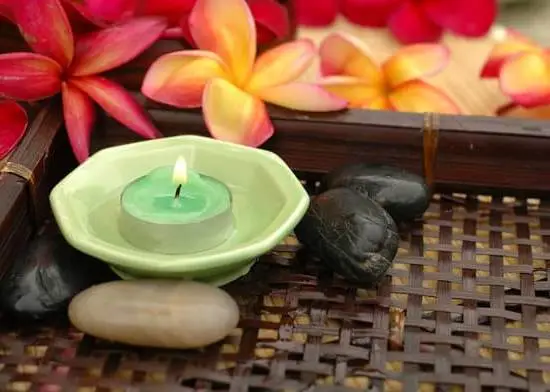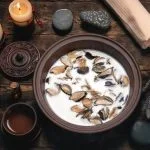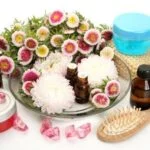When did aromatherapy originate? Aromatherapy, a practice that involves using essential oils for therapeutic purposes, has a long and rich history that dates back to ancient civilizations. From its early beginnings to its modern applications, the use of aromatic plant extracts has been intertwined with human health and well-being for centuries. In this article, we will explore the origins of aromatherapy, its historical development, and its current popularity in various cultures and traditions.
Aromatherapy is more than just a trendy wellness practice-it has roots in ancient civilizations and has evolved over time to become an established form of complementary medicine. By delving into the history of aromatherapy, we can gain a deeper understanding of how this healing modality has been used throughout the ages. From early Egyptian practices to traditional Chinese medicine, the use of aromatic plants for therapeutic purposes has been documented in diverse cultures around the world.
In exploring the ancient origins of aromatherapy, we can uncover the ways in which different cultures and traditions have utilized essential oils and aromatic compounds for physical, emotional, and spiritual healing. By understanding where aromatherapy comes from and how it has been practiced over millennia, we can better appreciate its enduring relevance in modern times.
History of Aromatherapy
Aromatherapy has a rich history that dates back thousands of years, with its origins rooted in ancient cultures and traditions. The use of aromatic plants and essential oils for medicinal, spiritual, and therapeutic purposes can be traced back to several ancient civilizations across the globe.
The history of aromatherapy can be documented through the practices of civilizations such as the Egyptians, Greeks, Romans, Chinese, and Indians. These cultures valued the healing properties of plant-derived essential oils and used them in various rituals, ceremonies, and medical treatments. Some key historical points on the origins of aromatherapy include:
- Ancient Egypt: The Egyptians are known for their extensive use of aromatic plants and essential oils in embalming rituals, medicine, cosmetics, and religious ceremonies.
- Ancient Greece: The Greek physician Hippocrates is often credited as one of the earliest proponents of using aromatics for medicinal purposes. He believed in the healing power of fragrant plant extracts and used them in his treatments.
- Ancient China: Aromatherapy was an integral part of traditional Chinese medicine, where essential oils were utilized alongside acupuncture and herbal remedies to restore balance and promote health.
As aromatherapy traveled across different cultures and regions over time, it underwent evolution and assimilation into various traditions. This contributed to the diverse range of aromatic practices found around the world today. Understanding the historical roots of aromatherapy provides insight into its enduring appeal and relevance in modern times.
Overall, delving into the history of aromatherapy reveals its time-honored significance as a holistic practice that continues to captivate people’s interest worldwide. From ancient civilizations to contemporary society, the use of fragrant botanicals for health and well-being remains a timeless art form with a storied past.
Ancient Origins of Aromatherapy
Aromatherapy, as the name suggests, has a rich and ancient history, dating back to centuries before modern times. The use of essential oils and aromatic plants for healing and rituals can be traced back to several ancient civilizations, where they played a crucial role in physical, emotional, and spiritual well-being. Some of the earliest known uses of aromatherapy can be found in:
- Ancient Egypt: The Egyptians were one of the first cultures to extensively document their use of aromatic plants and oils for healing, embalming the dead, and religious ceremonies. They used essential oils such as frankincense, myrrh, and cedarwood for their medicinal properties as well as for cosmetic purposes.
- Ancient China: Traditional Chinese medicine has a long history of incorporating aromatic plants into their healing practices. The use of herbs such as ginger, cinnamon, and citrus peels was recorded in ancient texts dating back to thousands of years ago.
- Ancient India: The practice of using aromatic plants and oils for healing dates back to Ayurveda, a traditional Indian system of medicine. Aromatherapy was an integral part of Ayurvedic treatments and was believed to balance the body’s doshas (energies).
Throughout history, various other cultures such as Greece, Rome, Persia, and even Native American tribes also utilized aromatherapy in different forms for its therapeutic benefits. These ancient origins laid the foundation for the modern practice of aromatherapy that we are familiar with today.
Aromatherapy in Different Cultures and Traditions
Aromatherapy has been a practice in various cultures and traditions for thousands of years. The use of aromatic plants and oils for healing purposes can be traced back to ancient civilizations such as Egypt, China, India, and Greece. In these cultures, aromatic substances were used not only for their therapeutic properties but also for religious rituals, beauty routines, and even in food preparation.
In ancient Egypt, aromatherapy played a significant role in everyday life and was closely associated with the spiritual and medicinal practices of the time. Essential oils and aromatic substances were used in religious ceremonies, mummification processes, medicinal treatments, and even as offerings to the gods. The Egyptians were known to have created extensive records on the use of essential oils and herbs for their healing properties.
Similarly, in ancient China and India, aromatic plants and herbs were valued for their holistic healing properties. Traditional Chinese medicine utilized aromatics such as camphor, cinnamon, ginger, and frankincense to balance the body’s energy flow and treat various ailments. In Ayurvedic medicine in India, essential oils were used in massage therapy (known as Abhyanga) to promote relaxation, enhance circulation, and alleviate pain.
The Greeks also made significant contributions to the practice of aromatherapy. The father of modern medicine, Hippocrates, recognized the therapeutic benefits of fragrant plants on physical and mental well-being. He prescribed scented baths with aromatic plants to aid in relaxation and promote overall health. The use of essential oils continued throughout history in various cultures and traditions across the globe, each contributing its unique blend of plant-based remedies for wellness.
The Evolution of Aromatherapy Practices
Aromatherapy has a rich history that dates back thousands of years, with the use of essential oils and aromatic plants for healing and wellness. In ancient times, various civilizations utilized aromatherapy practices for medicinal, spiritual, and cosmetic purposes. The Egyptians, for example, incorporated aromatic oils into their religious rituals and used them for embalming. Meanwhile, the Greeks and Romans also embraced aromatherapy, recognizing its therapeutic properties in treating various ailments.
As time progressed, the knowledge and practice of aromatherapy spread across different cultures and traditions. In Asia, particularly in traditional Chinese medicine and Ayurveda in India, aromatic substances were used to balance the body’s energy systems and promote overall well-being. These ancient practices laid the foundation for the evolution of aromatherapy as it is known today.
The evolution of aromatherapy practices continued to develop over the centuries, with advancements in distillation methods leading to the production of more concentrated essential oils. This allowed for a deeper understanding of the potential benefits of each plant extract and expanded the range of applications in holistic healing and wellness practices.
| Aspect | Information |
|---|---|
| Ancient Egyptian Use | Aromatic oils were used in religious rituals and for embalming by Egyptians. |
| Traditional Chinese Medicine Influence | Asian cultures integrated aromatic substances to balance body’s energy systems. |
| Advancements in Distillation Methods | Development of more concentrated essential oils leading to an expanded application range., |
The Modern Aromatherapy Movement
During the 1960s and 1970s, the interest in alternative medicine and holistic healing practices surged, leading to a revival of aromatherapy in Western societies. Influential figures such as Robert Tisserand and Jean Valnet contributed to the popularization of aromatherapy through their books and teachings, further establishing it as a legitimate complementary therapy.
This period also saw the establishment of professional organizations and schools dedicated to aromatherapy, promoting education and standardization within the field. As a result, aromatherapy gained recognition as a holistic approach to health and well-being, leading to its integration into mainstream healthcare practices and spa treatments.
| Year | Event |
|---|---|
| 20th century | French chemist René-Maurice Gattefossé discovers healing properties of essential oils |
| 1960s-1970s | Revival of aromatherapy in Western societies; establishment of professional organizations and schools dedicated to aromatherapy |
Scientific Research and Evidence of Aromatherapy Benefits
Aromatherapy has been used for centuries to promote physical and psychological well-being, but only recently has scientific research begun to support the benefits of this practice. Despite its long history, aromatherapy is still a largely understudied field, but the evidence that does exist suggests that it may have a range of therapeutic effects.
Effects on Mental Health
Numerous studies have explored the potential of aromatherapy in addressing mental health issues such as anxiety, depression, and stress. Aromatherapy using essential oils like lavender, bergamot, and chamomile has been shown to have calming effects on the nervous system. In one study published in the Journal of Alternative and Complementary Medicine, inhalation of lavender essential oil was found to significantly reduce symptoms of anxiety in participants.
Physical Benefits
In addition to its impact on mental health, there is also growing evidence supporting the use of aromatherapy for physical ailments. Research has indicated that certain essential oils possess anti-inflammatory, antimicrobial, and analgesic properties. For example, tea tree oil has been shown to have antibacterial and antifungal effects when used topically. Peppermint oil has demonstrated efficacy in reducing nausea when inhaled or applied topically.
Limitations and Future Research
While existing research into the benefits of aromatherapy is promising, it is important to note that much of it is still preliminary. Many studies are small-scale or suffer from methodological limitations. Additionally, more research is needed to understand the mechanisms through which aromatherapy exerts its effects on the body and mind. As interest in complementary and alternative medicine continues to grow, it is likely that further scientific inquiry will shed more light on the true potential benefits of aromatherapy.
Aromatherapy Today
Aromatherapy has evolved significantly over the centuries and has become widely popular in modern times due to its various uses and applications. Today, aromatherapy is utilized in a variety of settings and for a multitude of purposes, ranging from relaxation and stress relief to natural healing and wellness.
Modern Uses of Aromatherapy
In today’s society, aromatherapy is commonly used for relaxation and stress relief through the use of essential oils in diffusers or as part of massage therapy. Certain scents like lavender, chamomile, and rose are known for their calming effects, while others such as peppermint and eucalyptus are used for their invigorating properties. Aromatherapy is also used to create a pleasant atmosphere in homes, spas, yoga studios, and other wellness facilities.
Applications in Wellness and Healthcare
Aromatherapy has found its way into the healthcare industry as well, with essential oils being integrated into holistic treatments for various ailments. Some practitioners use aromatherapy to alleviate symptoms of conditions such as headaches, nausea, insomnia, and anxiety. Additionally, there has been an increase in the use of aromatherapy in palliative care to provide comfort to patients nearing the end of life.
Integration Into Daily Life
Beyond relaxation and healthcare settings, aromatherapy has also become a part of people‘s daily routines through products such as scented candles, room sprays, bath salts, and skincare items. Many individuals integrate essential oils into their self-care practices by incorporating them into their beauty regimens or using them to create a peaceful ambiance at home.
As aromatherapy continues to gain popularity in today’s society, its uses and applications are expanding to cater to the diverse needs of individuals seeking natural solutions for overall well-being.
Conclusion
In conclusion, it is clear that the practice of aromatherapy has a long and rich history, dating back to ancient civilizations and continuing to evolve into the modern era. The use of essential oils and aromatics for healing, relaxation, and spiritual purposes can be traced across various cultures and traditions, demonstrating the timeless appeal and effectiveness of this art and science.
Throughout history, aromatherapy has been utilized in diverse ways, from ancient Egyptian embalming rituals to traditional Chinese medicine to the fragrant baths of ancient Greece and Rome. These early practices have laid the foundation for the modern aromatherapy movement, which emphasizes the therapeutic benefits of essential oils for both physical and emotional well-being.
Today, aromatherapy continues to thrive as a popular holistic approach to health and wellness. With ongoing scientific research providing evidence of its benefits, the use of essential oils for stress relief, mood enhancement, pain management, and skincare has become widely accepted. As we look to the future, it is evident that the timeless tradition of aromatherapy will continue to play a significant role in promoting overall well-being and vitality.
Frequently Asked Questions
When Did People Start Using Essential Oils?
People have been using essential oils for thousands of years, with evidence of their use dating back to ancient civilizations like the Egyptians, Greeks, and Romans. These cultures utilized essential oils for various purposes such as religious ceremonies, healing practices, and aromatic enjoyment.
Who Is the Father of Aromatherapy?
The father of aromatherapy is widely considered to be René-Maurice Gattefossé, a French chemist and perfumer who coined the term “aromatherapy” in the early 20th century. His work with essential oils after experiencing their healing properties firsthand following a laboratory accident led to the development and popularization of aromatherapy as a holistic healing practice.
What Culture Uses Aromatherapy?
Aromatherapy has been practiced by many different cultures throughout history, including but not limited to ancient China, India, Egypt, Greece, and Rome. In modern times, it has become a popular alternative medicine practice across the world, incorporating diverse cultural traditions and remedies into its use of essential oils for physical and emotional well-being.

Are you looking for a natural way to improve your health and wellbeing?
If so, aromatherapy may be the answer for you.



